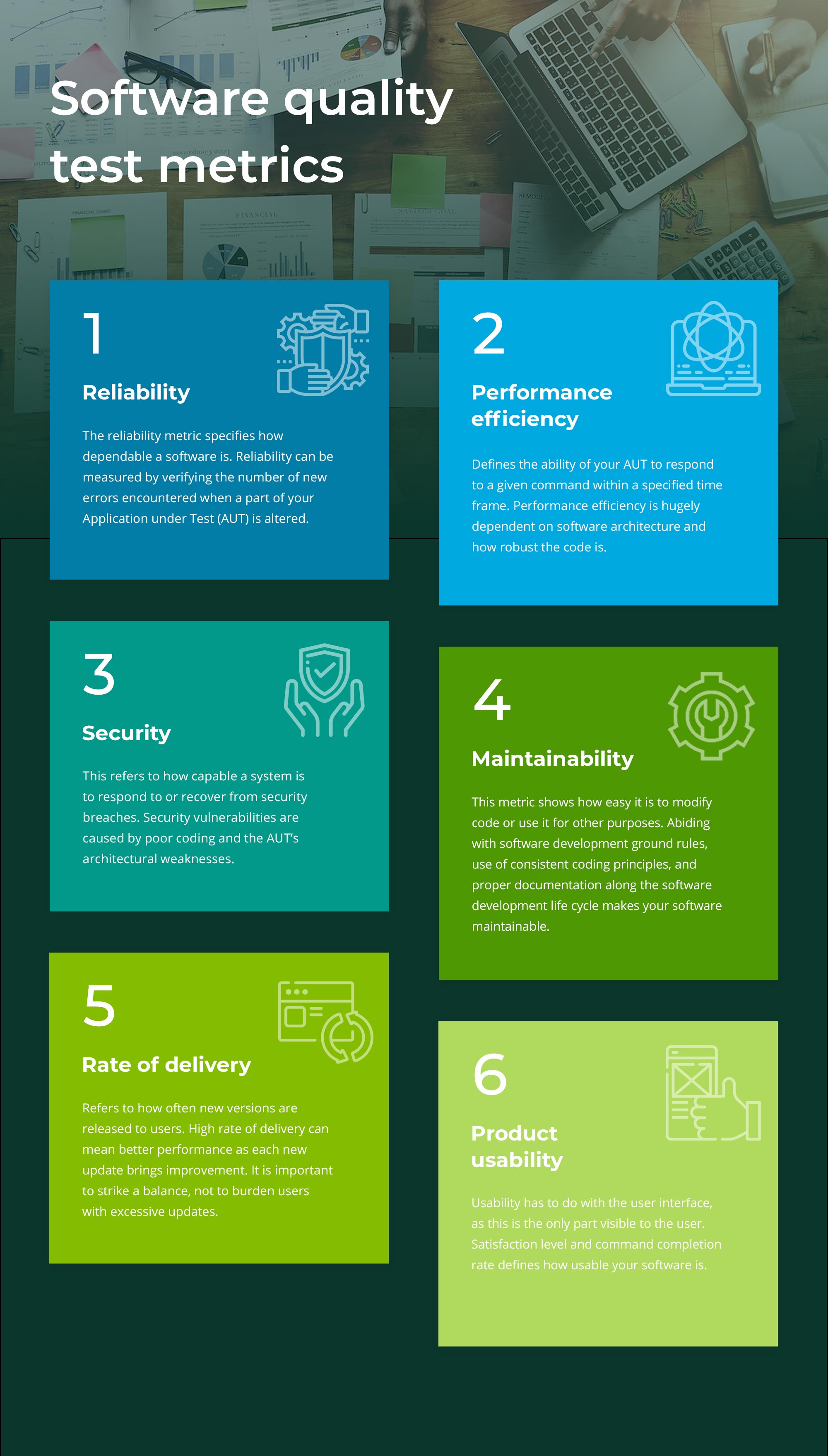
Five smart methods to guarantee a successful test automation maintenance process
Test automation helps improve software quality in less time, but not all tests can be automated. Since there are different test scenarios, it’ll be invaluable to know how to combine manual with automated testing for every application under test.
While there is no correct formula that will perfect everyone’s testing needs, we curated five of our best test automation practices that emphasize reliability, reusability, and maintainability.
To give you the best chance at achieving an efficient test, we discussed some tools you should consider for automating your tests, along with the necessary certification that will place you as a verified software test professional.
Introduction
Delivering high-quality software applications with a short time-to-market and providing constant software updates that improve performance are some of the benchmarks of a successful app. These accomplishments can, however, be limited if the personnel dedicated to ensuring the app’s performance is not put into efficient use.
Test automation is the way to go if you’re considering speeding up some aspects of your software development life cycle. But for some software testers, this process can easily morph from a lifesaver to a nightmare. Therefore, the need to understand what you should and shouldn’t do is paramount.
Why test automation fails
Software testing and quality assurance are as important as developing the software itself. The reason behind this is that it gives a certain degree of confidence over a software’s performance and usability, which are critical factors as to how the product will fare in today’s rugged user environment.
If you want to improve your software products’ performance significantly, you should consider testing and quality assurance while drawing up plans for your software development life cycle.
A common misconception is that many organizations expect total automation of the testing process. No matter how good a testing framework is, there will be some parts that require human inspection. It is worth knowing that there is no ideal ratio to go by when splitting a test into a manual or automated process. It all depends on the software that is being tested.
The scale of automation will vary when considering if the application under test (AUT) is static, dynamic, or animated. The most functional cases for the application should be automated as automated functional tests. If you are questioning why test automation fails for your company, we would suggest you re-evaluate the extent of test automation needed depending on the sort of software being tested.
Five methods to ensure a smooth test automation process
Our in-house software testing experts have carried out several tests, both manual and automated. From their practical experience, they have been able to come up with some essential tips to ensure a smooth test automation procedure. In this section, we discuss some of their best practices in making sure your software test automation process guarantees its primary aim of increased productivity and an upward trend in improving the quality of your software products.
Identify and plan your proposed test cases
Starting a test suite without adequate planning will unavoidably result in uncertainties and poorly implemented test cases. It is also necessary to document the testing process, as this opens an effective communication channel with the software development team.
Developing a robust test strategy helps identify what to test, how to test, when to test, and the personnel that should be behind the tests. It also defines the testing scale and objectives. It is recommended to employ the services of experienced QA experts to write test plans.
Planning helps create an agile and modularized testing process. It is especially effective in situations where the result of one case is dependent on the outcome of a preceding step. Always remember that every method or function should have at least a unit test.
It is also better to break down automated tests into small modules. Doing this will help you eliminate static delays and reuse test components if they are required in multiple test cases. These tips are essential for achieving efficient test automation.
Ensure a bug-free test environment
Software testers need to develop excellent test scripts for their tests to stand any chance of improving a software’s quality. They should also ensure the development of flexible scripts to accommodate regression testing.

While there is no specific metric to measure an AUT or test environment quality by, it can be helpful to use the CISQ software quality model that is defined by four key factors, these are: reliability, performance efficiency, security, maintainability. You can use the application’s rate of delivery and product usability as additional metrics.

Continuous Integration and Continuous Delivery (CI/CD)
Continuous delivery (CD) has to do with being able to deliver changes to software and its users quickly, using a sustainable approach. It’s a broader approach towards adopting an agile testing process. Continuous delivery accepts the deployment of code revisions as and when due without short release cycles.
In summary, it allows you to deploy every change that passes your test case automatically. This practice can only be possible using an advanced level of test automation.
While CD majorly refers to operations that should be covered by the tester, continuous integration (CI) is a term that depicts how the continuous delivery method is executed at the software engineering level. It’s a practice that software developers should use frequently. CI entails a process whereby software developers integrate the changes they make to a software several times. An integration test is run with every change in source code to identify errors and fix them more easily.
It is advisable to combine continuous integration with automated testing to make your code reliable. You can use tools such as Hudson or Cruise Control to add CI to your working environment.
Paying adequate attention to test reports
When the testing process is complete, the test automation software will record and report results. These findings will be in various formats, and some tools can create problem tickets. However, the basic outcome for each test scenario is either a pass or a fail.
If test report analysis is not done properly, there will be cases of faults unattended to, and this results in unproductivity and wastage of resources. Therefore, it is compulsory to assess test reports manually for deficiencies and investigate the reason behind the failure of certain tests.
Some other vital tips come from one of our experts and senior developer, José Angel Labbad. He recommends the integration of DevOps with automatic unit testing, so each Pull Request and integration has all its tests executed. This practice will allow you to easily know if there is something broken with a new change. Also, always try to increase the “Code Coverage” metric on each development sprint.
You should also consider making regression test suites -your primary contender for automation- because it consists of the test cases that are repetitive and time-consuming. Therefore, automating them will help you conserve resources.
Get the best out of test tools and recognized certifications
When it comes to software testing, the main body that comes to mind in certifying experts is the International Software Testing Qualifications Board (ISTQB). It is advisable to be a certified professional if you want to reassure your clients and provide backing for your knowledge.
The choice of testing tools can sometimes be tricky, as there are several options available, with different features. The section below covers some actionable tips that will guide you when trying to make the decision.

The best test automation tools you should use
The importance of selecting the right tool for automated tests cannot be overemphasized. To make the best decision, you need to put in enough research in assessing the capabilities of several automation software.
Before paying for any test automation tool, you should ensure it meets criteria that guarantee efficiency while helping you to automate tests. We have gathered some basic features that an ideal automation tool should have. They include:
- Support for multi-platform installation. Testing tools should be able to run on different operating systems. This criterion will enable multiple team members to be able to run tests collaboratively.
- The testing application should provide support for integration with other tools like debuggers, error trackers, and test management tools.
- The tool should be user friendly. Easy to navigate user interface and concise functionality are some of the factors that determine how easily a tester can set up a test automation framework.
- The selected tool should be able to carry out end-to-end tests.
- The tool you’ll select should be robust and provide near real-time results. This will allow developers to act on test results promptly.
One of the most common test automation tools is Selenium. This portable framework for web testing does not require you to learn any scripting language.
Our QA and software testing experts at Bertoni Solutions also use Microsoft Azure, Microsoft Test Manager (MTM), and SonarQube for testing. The particular use case depends on the scope of the project at hand. The ISTQB certifies them on quality assurance and testing from the fundamentals to the highest levels, and they also possess Microsoft Azure DevOps certifications, which provides theoretical backing to their practical experience.
Final thoughts
As a software tester, it is essential to know when to automate tests, how to automate tests, and what to consider while automating tests. Most test automation frameworks fail because they were not planned adequately, or the parts of the source code that require manual tests were automated.
If you want your product to reach outstanding performance levels in the market, you must deliver products that have undergone rigorous testing procedures. Improving the quality of your software products via regular updates is necessary, but the changes should go through quality assurance and testing procedures to ensure better all-round performance. When planning or budgeting for projects, endeavor not to save on QA and testing, as the cost of software failure will be too high.
Remember that the tips discussed in this article are not the only things that can assist you in automating tests. It all depends on the nature of the application under test. It is very likely you’ll come across challenges as you continue to make progress. To prevent catastrophic failure, you should be aware of possible complications and watch out for the solutions.
Our software testing and quality assurance experts at Bertoni Solutions have up to seven years of hands-on experience. Their practical experience combined with a robust theoretical background from the ISTQB course makes us a reliable and trustworthy partner for your business. For the last three years, we’ve carried out manual and automatic tests for our customers in the DACH market. For any software testing and quality assurance related inquiries you might have, do get in touch with us.





